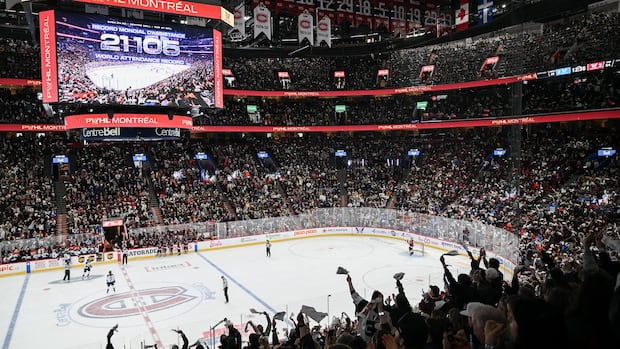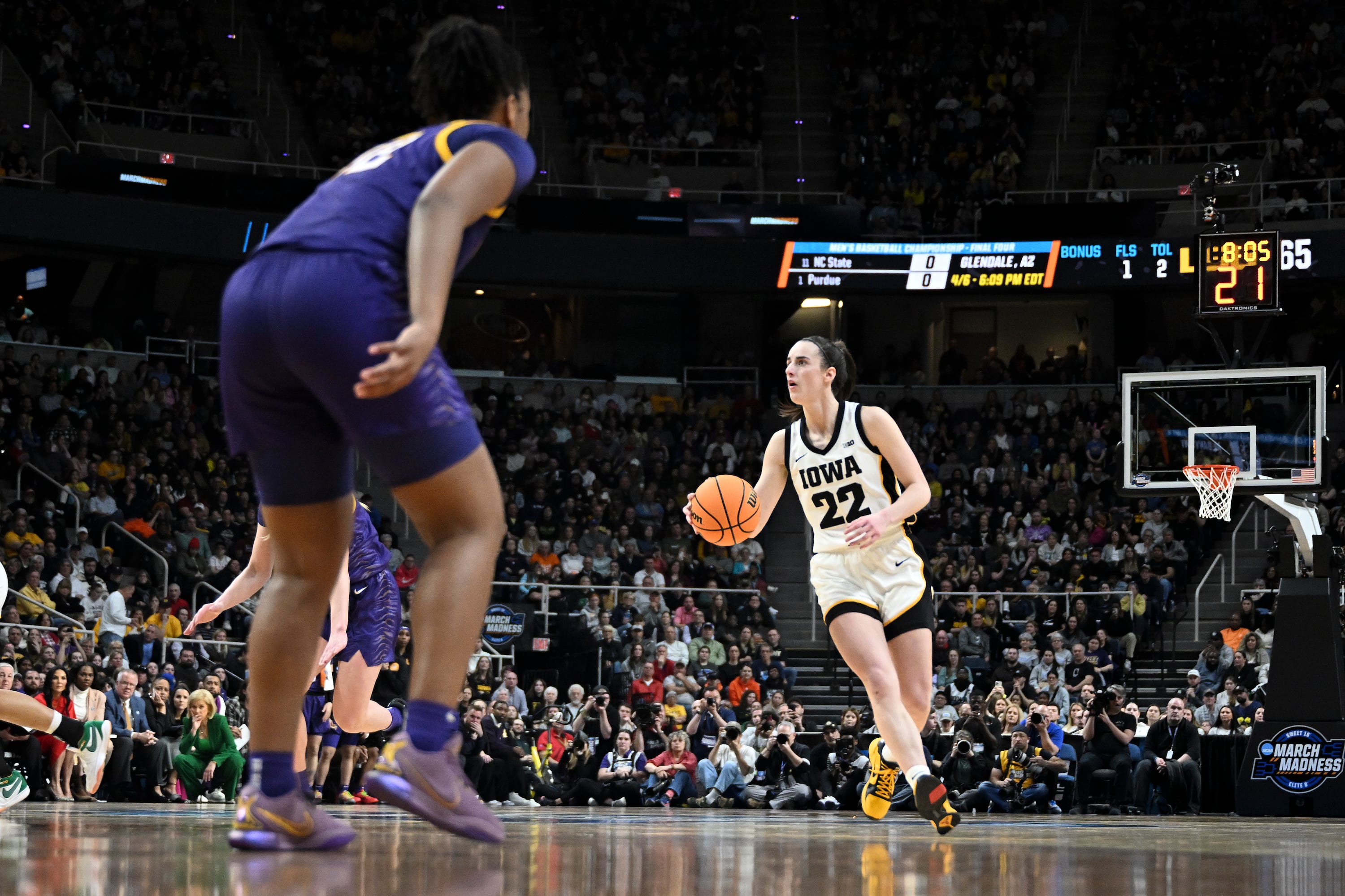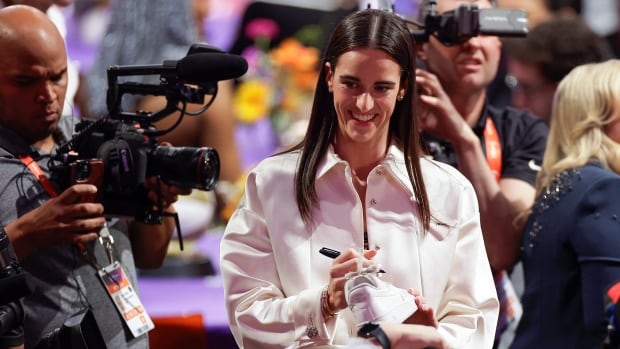
“Start doing it to me and we’ll get along just fine.”
It was a cringe-worthy moment right at the start of Caitlin Clark’s first news conference with the Indiana Fever: when it was his turn to ask a question — just the second one for the WNBA’s No. 1 draft pick — columnist Gregg Doyel of the Indianapolis Star instead mimicked Clark’s signature heart-shaped hand gesture.
Clark smiled and said, “Yeah, I do that at my family after every game.”
Which is when Doyel responded with his comment about “doing it to me and we’ll get along fine” that was broadcast live and immediately ignited social media, with some people arguing his credentials should be revoked.
Doyel later apologized in a column for being “part of the problem,” saying he “screwed up.”
WATCH | Gregg Doyel’s exchange with Clark starts at 4 minutes 15 seconds:
But while Doyel’s comments might be one of the more recent — and public — instances of a female athlete being sexualized, sports and media experts note there’s a long history of it. And now, as women’s sports are experiencing a meteoric rise in popularity, breaking attendance and viewership records, a new report highlights how sexism still holds back women’s professional sports — and investment decision-making.
“We take a step forward and then two steps back,” Angela Schneider, an Olympic silver medallist in rowing and the director of the International Centre for Olympic Studies at Western University in London, Ont., told CBC News.
“It definitely puts an exclamation mark on the fact that we still have a long way to go,” said Cheri Bradish, an associate professor in sports marketing at Toronto Metropolitan University, and the director of the Future of Sport Lab.
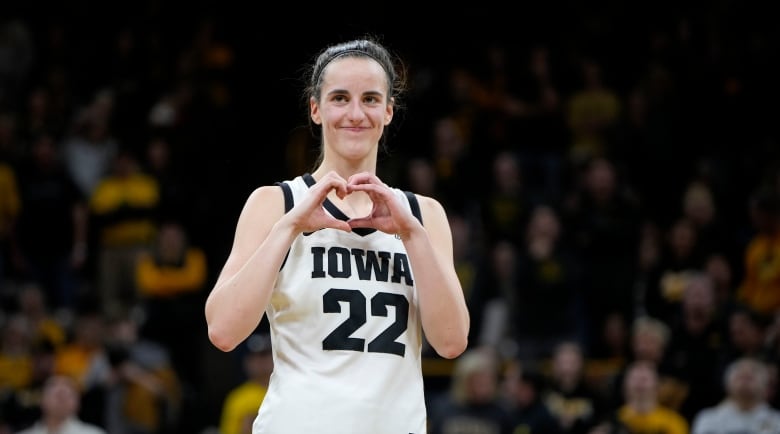
Women’s sport in the spotlight
Women’s sport isn’t just having a moment — it’s having a movement, Bradish told CBC News. She points to brand new research from Canadian Women & Sport, which she was involved with, that two in three Canadians are fans of women’s sport, and there’s an appetite for more.
For example, Saturday’s PWHL game in Montreal set a world attendance record with a sold-out crowd of 21,105 people, marking the largest attendance ever recorded for a women’s hockey game worldwide. A record-setting average 2.45 million people tuned into ESPN to watch last Monday’s WNBA draft featuring Clark, peaking peaking at 3.09 million, four times as many as last year’s draft viewers.
Fans came in record-breaking droves as Montreal took on Toronto in latest PWHL showdown.
And over the weekend, world No. 1 golfer Nelly Korda won her second major title to become only the third LPGA player to win five consecutive starts. Some have heralded her as bringing in “a new era” of women’s golf, and Golf Digest reported that “Korda’s title run also gave the tour a potential jolt for its TV audience.”
“Interest in women’s sports is growing at a meteoric pace,” television and streaming ratings company Nielsen wrote in a report last year, before any of these most recent sporting events had even happened. “When brands, sponsors and broadcasters are in it to win it, the audience is ready to reward.”
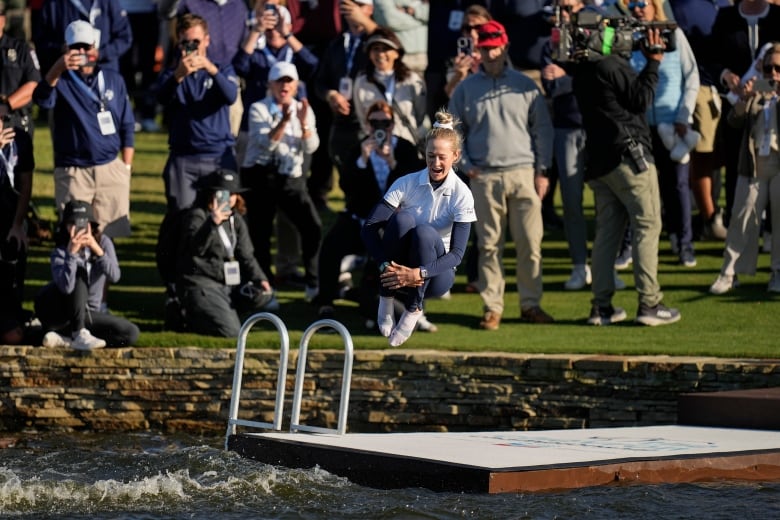
‘Aesthetics over athletics’
But, in many ways, marketing and media of female athletes hasn’t caught up, Schneider said. Coverage has traditionally focused on women’s bodies, their marital status and their causes instead of their accomplishments, she added.
It’s still not uncommon, and it creates a demeaning environment for women’s sports, Bradish added.
“There’s been long-standing inappropriate, sexualized, undermining tones and tenors and communications with female athletes in the media,” she said.
As the report, released Monday, from Canadian Women & Sport notes, for many decades, women were still fighting for the right to play. “As a result of sexism, discrimination and many structural barriers, women’s progress toward professionalization of sport has been substantially held back,” the authors say.
That research is based on a poll 2,000 Canadians aged 13-65 in late 2023. In the second part of the report, which provides a roadmap for investment, the authors note that “gendered barriers, myths and biases have had, and continue to have, a significant effect on investment decision-making.”
Perhaps the most well-known historic example is the All-American Girls Professional Baseball League, made popular by the 1992 movie A League of their Own. The league ran from 1943 to 1954, and prioritized femininity. Its players were required to attend Helena Rubenstein’s Beauty Salon for charm classes, and efforts were made to have every athlete be as attractive as possible, according to the league’s website and the Baseball Hall of Fame.
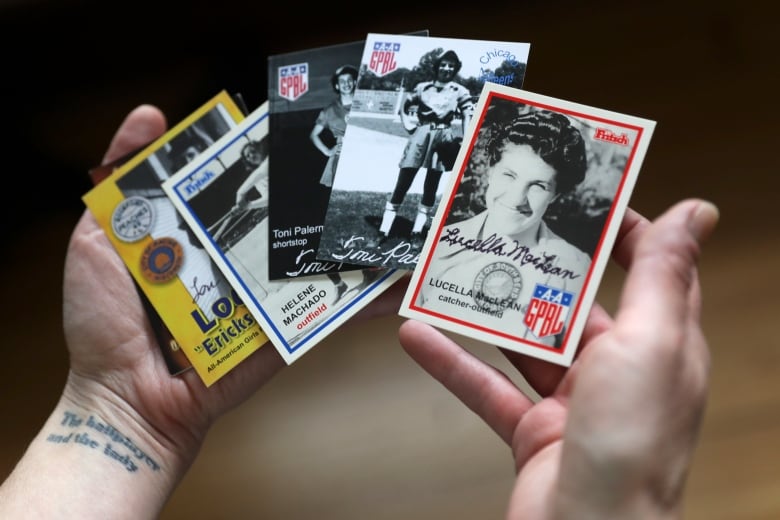
Much more recently, there was tennis’s Ana Kournikova, who was portrayed in the British media as “a kind of sporting Lolita” and whose widespread popularity was based on her beauty, according to media analyses.
U.S. gymnast Simone Biles and tennis star Serena Williams have also faced repeated sexist trolling and media scrutiny, or have been compared to male athletes (“I’m not the next Usain Bolt or Michael Phelps. I’m the first Simone Biles,” Biles famously said in 2016). Both have faced coverage that focuses on what they’re wearing, or their hairstyles.
A 2016 study from language experts at Cambridge University found that language around women in sport “focuses disproportionately on the appearance, clothes and personal lives of women, highlighting a greater emphasis on aesthetics over athletics.”
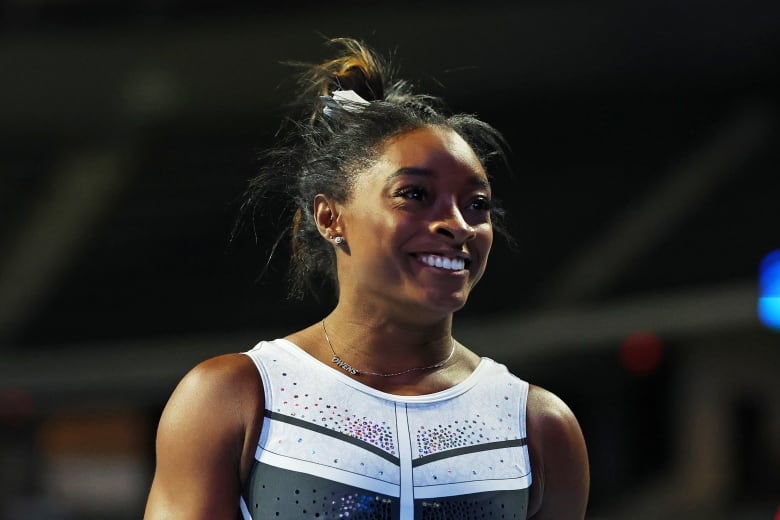
The study examined Cambridge’s multi-billion word databases of written and spoken English from a range of media sources. Researchers found notable word associations and combinations for women in sport included: “aged,” “older,” “pregnant,” “married” and “unmarried.”
Meanwhile, the words most commonly used to describe male athletes, according to the Cambridge study, were adjectives like “fastest,” “strong,” “big,” “real” and “great.”
One step forward
As women’s sport continues its current momentum, media and marketers should be focusing on the skill and abilities of the athletes, Schneider said.
“Doubling down the efforts from that perspective would really help,” she said.
Joleen Mitton who plays basketball with Vancouver’s All My Relations women’s basketball team, and Julia Lipscombe, producer of CBC’s The Early Edition, preview the NCAA final four matchups – and discuss why Canada’s Aaliyah Edwards and the U.S.’s Caitlin Clark and Angel Reese among others have drawn so many people to women’s basketball.
That sentiment is reiterated in the new report from Women & Sport, which notes that women athletes are role models and emphasizes that “investors and brands need to highlight, market, and celebrate unique aspects of the product of the women’s game.”
The Canadian Women & Sport report also found that fans of women’s sport are more diverse, educated and have higher household incomes than the general population — an “attractive audience for brands and investors,” it notes.
Ready to inspire, together. 🩷💜 <a href=”https://t.co/Vpqd4kwXPb”>https://t.co/Vpqd4kwXPb</a> <a href=”https://t.co/juWMV4kouo”>pic.twitter.com/juWMV4kouo</a>
—@thepwhlofficial
We know the fans are there, and so is corporate interest, Bradish said. She points to the PWHL as an example of marketing done well. The league has attracted partnerships with Canadian Tire, Tim Hortons and Barbie, just to name a few.
Historically, in Canada, women in sport really only received attention or marketing bumps during the Olympic Games, Bradish says. But that’s shifting, and marketers and brands are starting to take advantage of the momentum, she added.
And that’s why what happened at Caitlin Clark’s press conference is so frustrating, according to Bradish, along with every sexist comment women athletes face on social media, which she says is another major problem.
“There’s still strides to be made in the marketplace despite all these great accomplishments.”
